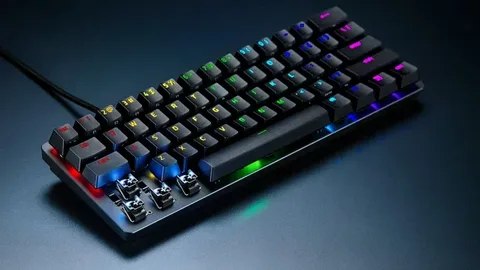In the world of mechanical keyboards, one layout that has gained immense popularity among gamers, programmers, and general users alike is the Tenkeyless (TKL) keyboard. As the name suggests, a tkl keyboard omits the numeric keypad found on the right side of a full-sized keyboard. But is this change the right move for you? Let’s explore the pros and cons of switching to a TKL keyboard to help you decide.
What is a TKL Keyboard?
Before diving into the benefits and drawbacks, it’s essential to understand what a TKL keyboard is. A TKL (Tenkeyless) keyboard typically has 87 or 88 keys, depending on the regional layout, and removes the number pad but keeps the function row and navigation cluster (Insert, Home, Arrow Keys, etc.). This design caters to users who want a more compact form factor without sacrificing essential keys.
Pros of Switching to a TKL Keyboard
1. More Desk Space
One of the most significant advantages of switching to a TKL keyboard is the additional desk space it provides. By removing the number pad, you free up several inches on your desk, allowing more room for mouse movement—a major plus for gamers and designers.
2. Better Ergonomics
With the mouse closer to your natural hand position, you can reduce shoulder strain during long periods of use. Many users report improved comfort after switching to a TKL layout, especially when using the keyboard for extended hours.
3. Portability
TKL keyboards are lighter and more compact, making them ideal for travel or use in multi-device setups. If you’re someone who moves between workstations or attends LAN parties, this is a huge convenience.
4. Aesthetics and Customization
With fewer keys, TKL keyboards often look cleaner and more minimal. The compact layout also makes it easier to find or create custom keycap sets and cases, enhancing personalization.
Cons of Switching to a TKL Keyboard
1. Lack of Numeric Keypad
The most obvious drawback is the absence of the number pad. If you frequently enter numerical data, such as in spreadsheets or accounting software, you may find this layout inefficient and frustrating.
2. Learning Curve
If you’re accustomed to a full-sized keyboard, transitioning to a TKL layout might initially feel strange. You may accidentally hit the wrong keys until your muscle memory adjusts.
3. Not Ideal for Certain Professions
For users in finance, data entry, or administrative roles, the number pad is a productivity tool. Losing it can slow down your workflow significantly.
Should You Make the Switch?
Now that you’ve seen the pros and cons of switching to a TKL keyboard, your decision should come down to your usage needs and preferences. If you’re a gamer, coder, or someone who values desk space and portability over number input, a TKL might be the ideal choice. However, if your job heavily involves numeric data, the lack of a number pad could be a dealbreaker.
Final Thoughts
In conclusion, understanding the pros and cons of switching to a TKL keyboard is crucial before making the leap. For many, the trade-off between space-saving and functionality is well worth it. Still, others may find themselves missing the number pad more than expected. Ultimately, it’s all about finding the right balance for your workflow and comfort.





